25 March 1778 Wednesday
Vases, Candelabra, Grave Stones, Sarcophagi. Tripods, Lamps and Ancient Ornaments volume II
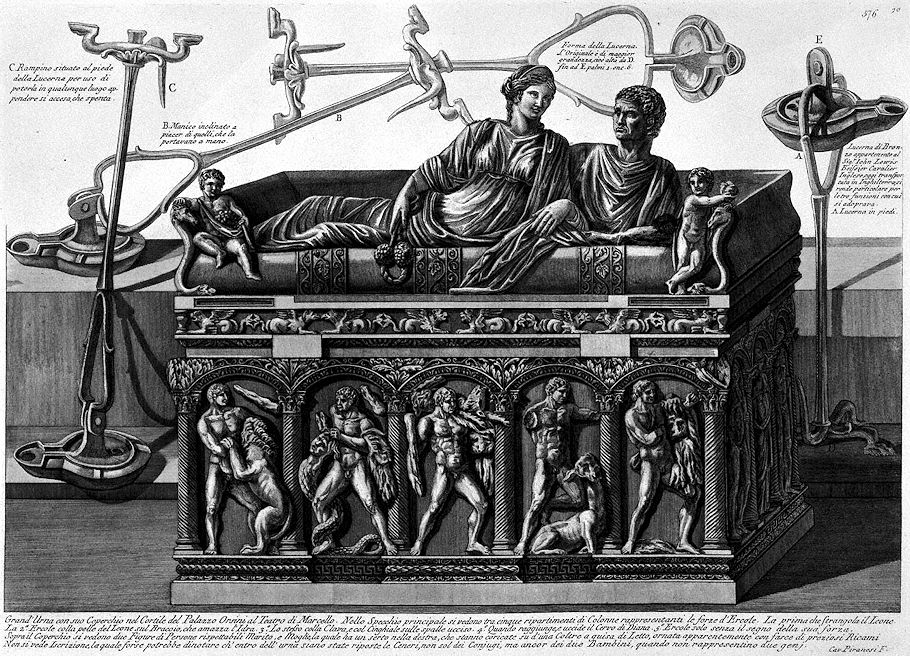
Great Urn with its Lid in the Courtyard of the Palazzo Orsini at the Teatro di Marcello. In the main Mirror one can see between five divisions of Columns representing the forces of Hercules. The first that strangles the Lion. The 2nd Hercules with the Lion's skin on his Arm, who kills the Hydra, 3rd The same with the Club, and with the Boar on his shoulders killed. 4.o When he reaches, and kills Diana's Stag. 5.o Hercules alone without the sign of his strength. Above the Lid can be seen two Figures of respectable Persons, Husband and Wife, who has a garland in her right hand, lying down on a Blanket in the shape of a Bed, apparently adorned with bands of precious Embroideries. The Inscription is not seen, which perhaps could indicate that the Ashes have been placed inside the urn, not only of the Spouses, but also of the two Children, when they do not represent two geni.
Bronze oil lamp belonging to Mr John Lewis Boissier English Cavalier, now transported to England; it makes itself particular for the three functions with which it was employed. A. Lamp standing. B. Handle inclined as desired by those who carried it by hand. C. Grapple located at the foot of the lamp for use of potorla in any place to hang on, that off. Shape of the lamp. The Original is of greater magnitude, i.e. high from. D. up to E. palmi 1 onc. 6.
Cav. Piranesi F.
24-25 y.o. Francesco Piranesi 1783
Il teatro di Ercolano
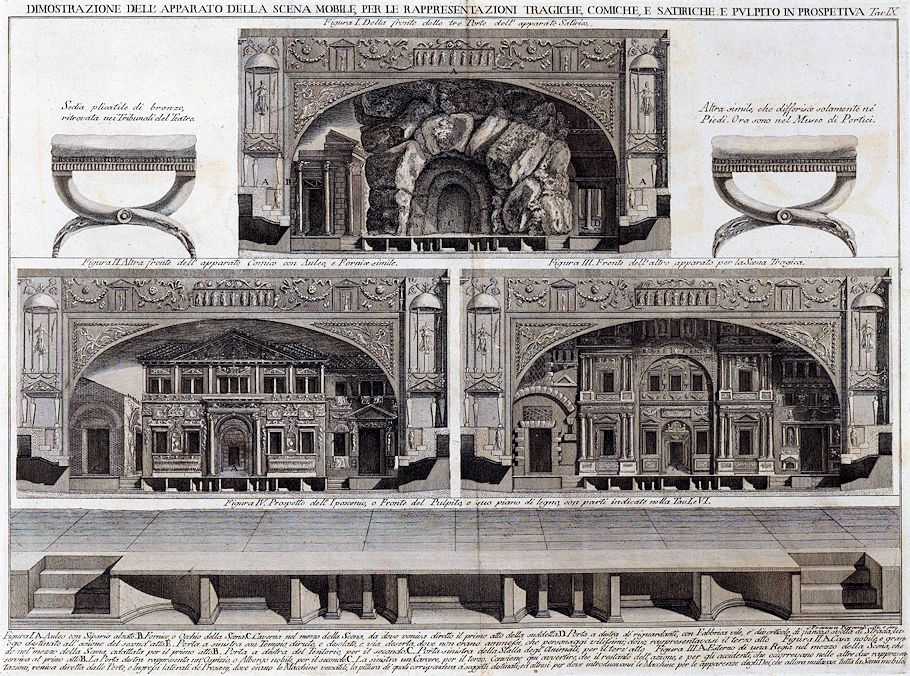
Demonstration of the movable stage apparatus, for tragic, comic, and satirical performances, and pulpit in perspective
Figure I. Of the front of the three Doors of the Satirical Apparatus.
Figure II. Other front of the Comic apparatus with Auleus and similar Fornix.
Figure III. Front of the other apparatus for the Tragic Scene.
Figure IV. Prospectus of the Iposcenium, or Front of the Pulpit, and its wooden surface, with parts indicated in Tables I and VI.
Bronze folding chair, found in the Tribunals of the Theater.
another similar, which differs only in the feet. Now they are in the Museum of Portici.
Figure I. A. Hall with raised curtain. B. Fornix, or Eye of the Scene. C. Cave in the middle of the Scena, from where the first act of the aforementioned was directed. D. Porta to the right of the relatives, with Fabbrica vile, and lateral diverticulum, or turn of the Strada, place intended for the action of the second act. E. Door to the left with a ruined and desolate Temple and deserted street, where only the most vile personages were admitted; where the third act was performed. Figure II. A. Noble, and large house in the middle of the Scene adapted for the first act. B. Door to the right of the Tentorio, for the second. C. Left door of the Animal Stable, for the third act. Figure III. A. Exterior of a Regia in the middle of the scene, which served the first act. B. The right door represents an hospice, or noble hotel, for the latter. C. The left a prison, for the third. It should be noted here that the rest of the action, and for the accidents, which occurred in the other two representations, was directed from the doors, or lateral entrances of the prosceni, where there were the versatile Machines, the painting of which corresponded to intended subjects, and likewise where the Machines were introduced for the appearances of the Gods, which then changed the whole mobile Scene.
Francesco Piranesi, delineated and engraved.
45-46 y.o. Francesco Piranesi 1804
Calcography of the Piranesis
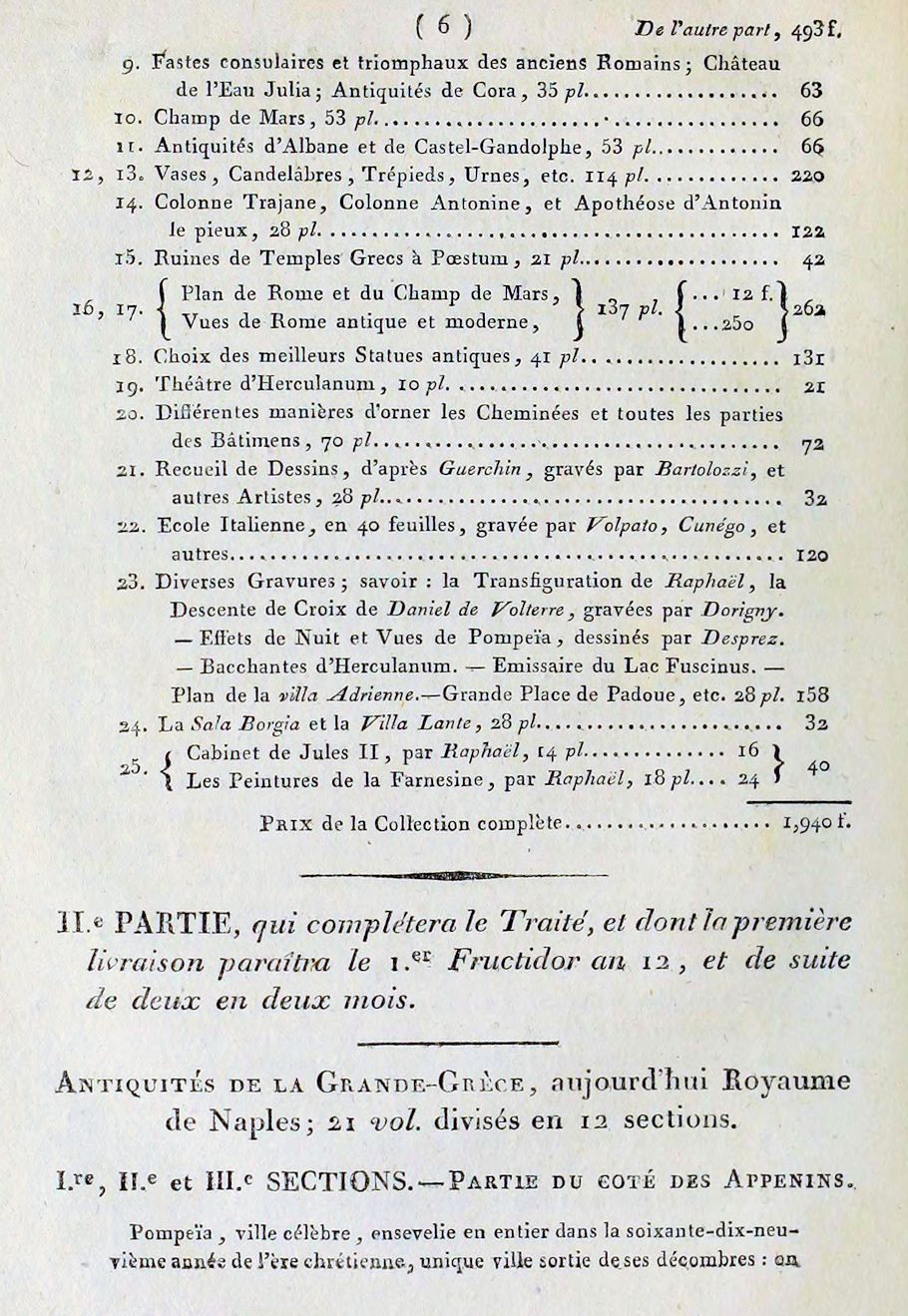
9. Consular and triumphal pomps of the ancient Romans; Julia Water Castle; Antiquities of Cora, 35 pl.
10. Field of Mars, 53 pl.
11. Antiquities of Albane and Castel-Gandolphe, 53 pl.
12, 13. Vases, Candelabras, Tripods, Urns, etc. 114 pl.
14. Trajan's Column, Antonine Column, and Apotheosis of Antoninus Pius, 28 pl.
15. Ruins of Greek Temples at Pśstum, 21 pl.
16, 17. Map of Rome and the Champ de Mars, Views of Ancient and Modern Rome, 137 pl.
18. Choice of the Best Antique Statues, 41 pl.
19. Theater of Herculaneum, 10 pl.
20. Different Ways of Decorating Chimneys and All Parts of Buildings, 70 pl.
21. Collection of Drawings, after Guerchin, engraved by Bartolozzi, and other Artists, 28 pl.
22. Italian School, in 40 sheets, engraved by Volpato, Cunťgo, and others
23. Various Engravings; namely: the Transfiguration by Raphael, the Descent from the Cross by Daniel de Volterre, engraved by Dorigni. -- Night Effects and Views of Pompera, designed by Desprez. -- Bacchantes of Herculaniim. -- Emissary of Lake Fuscinus. -- Plan of the Adrienne villa. -- Main Square of Padua, etc. 28 pl.
24. La Sala Rorgia and the Lante pailla, 28 pl 32
25. Cabinet of Jules II, by RaphaŽl, 14 pl., Les Peintures de la Farnesine, by RaphaŽl, 18 pl.
2nd PART, which will complete 2nd Treatise, and whose first issue will appear Le Fructidor year 13, and in succession from two to two months.
Antiquities of Magna Graecia, now Kingdom of Naples; 21 vol. divided into 12 sections.
1st, 2nd, & 3rd DIVISIONS - Part on the side of the Apennines.
PompeÔa, famous city, buried in its entirety in the seventy-ninth year of the Ehrelia era, the only city to emerge from its rubble: on.
25 March 1812 Wednesday
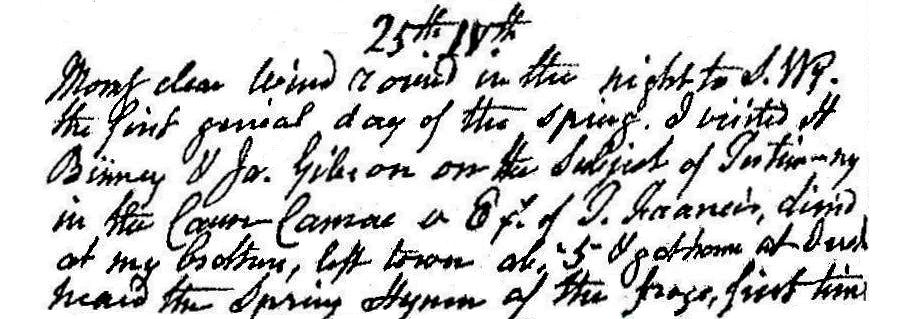
Morning clear, wind round in the night to SWerly. The first genial day of the Spring. I visited H Binney and Ja. Gibson on the subject of interviewing[?] in the case[?] Camac vs. Ex. of T. Francis. Dined at my brothers. Left town about 5 and got home at dusk. Heard the Spring Hymn of the frogs, first time.
25 March 2007
...and speaking of random tangents
"The present essay can only raise and set aside the question of Latrobe's relationship to mechanical aids in drawing, such as the camera obscura for which he thanked President Thomas Jefferson on 21 March 1807."
Ah yes, mechanically aided drawings. Does something like that actually exist?
25 March 2012
Re: Traditional Architecture
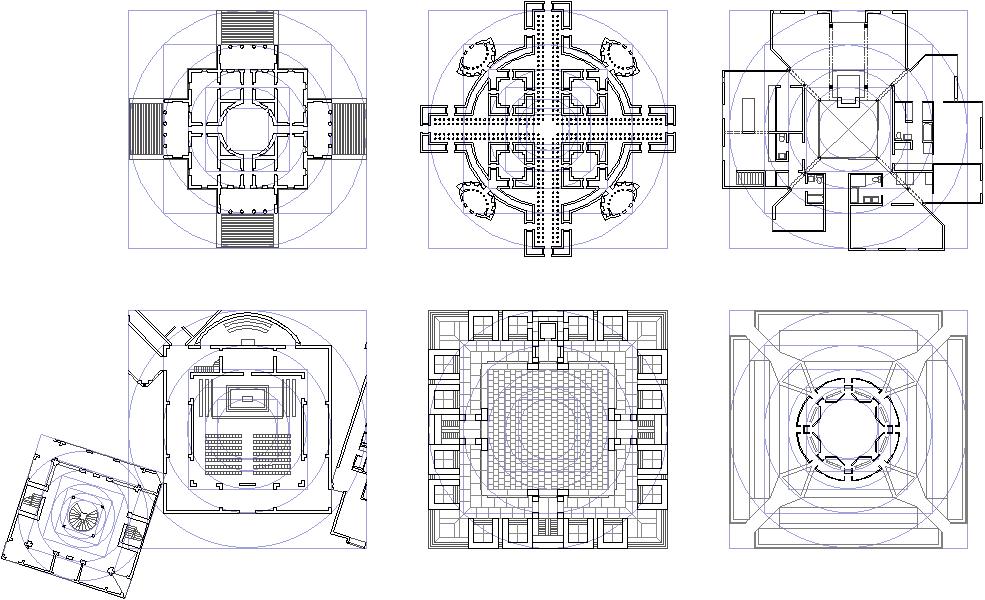
Palladio, Piranesi, Kahn, Kahn, Kahn, Kahn
25 March 2017
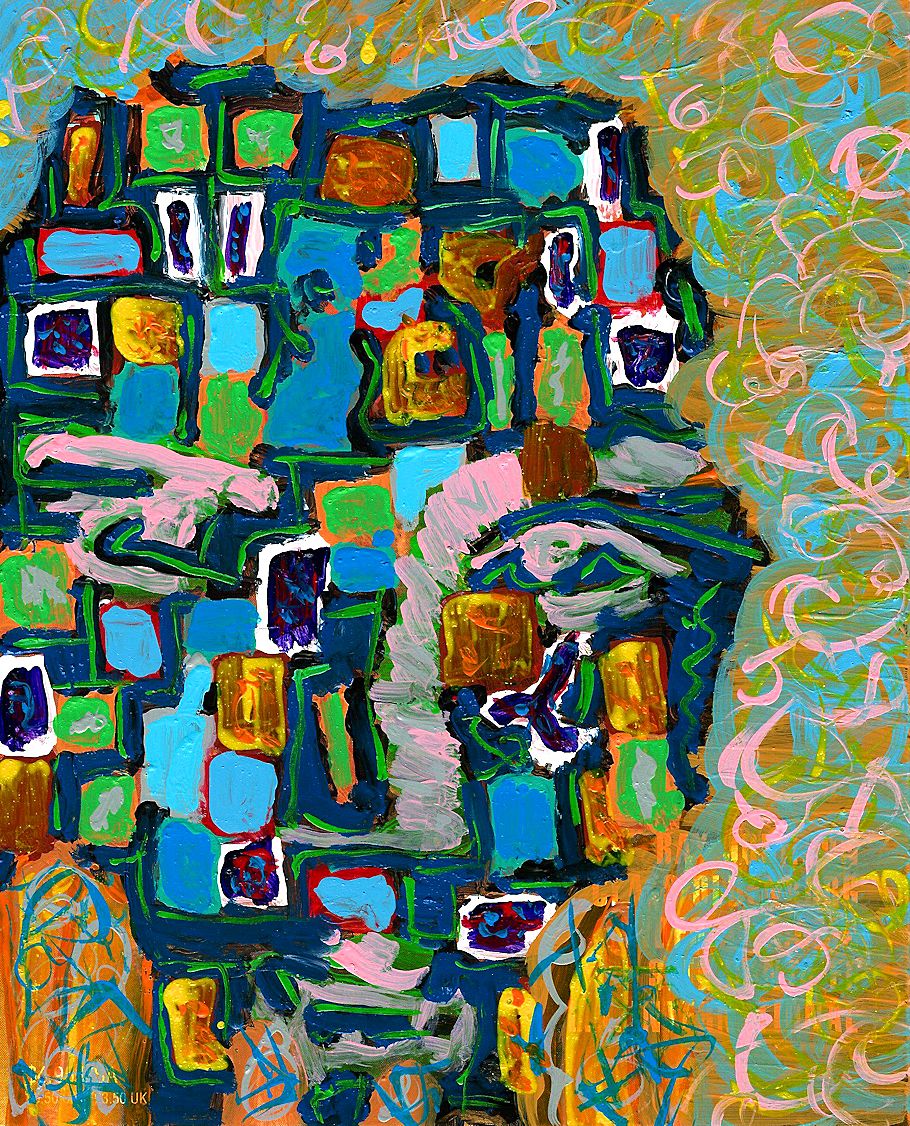
zero zero nine
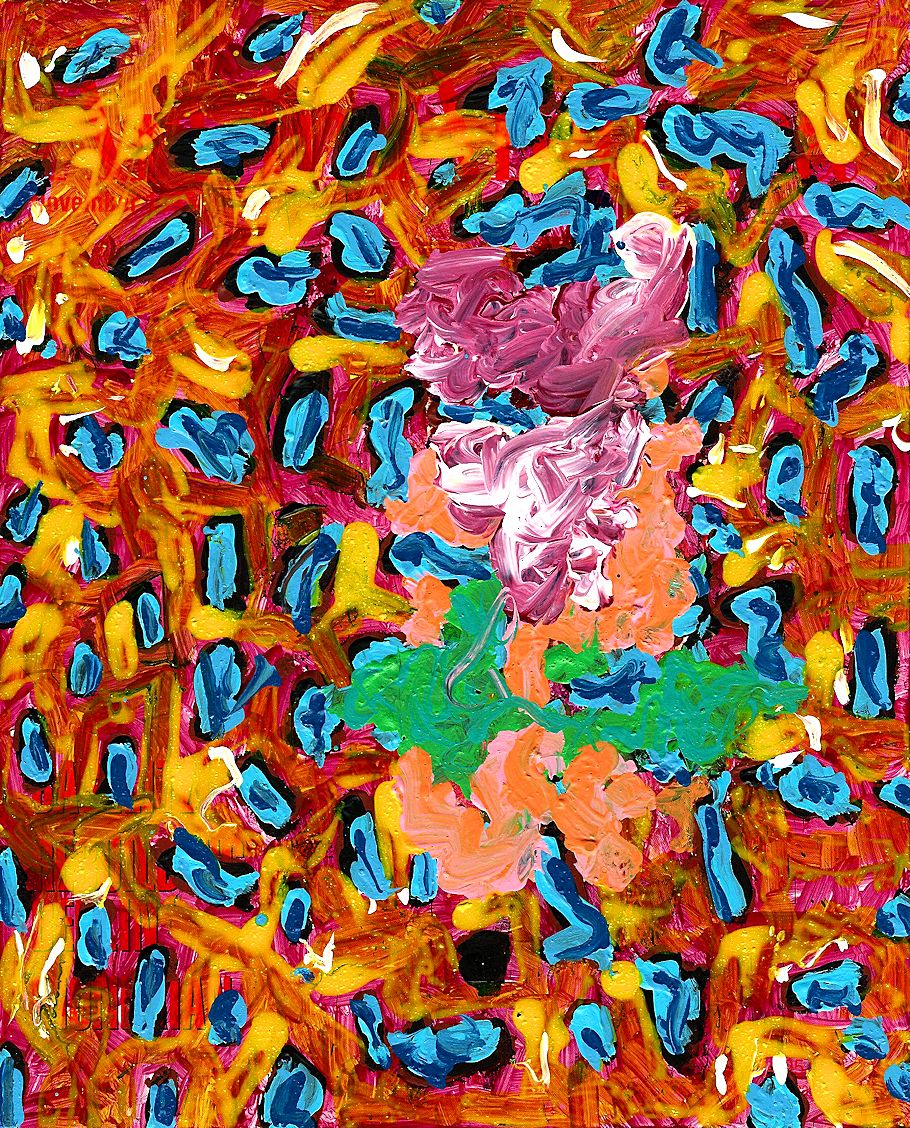
zero zero ten
25 March 2023 Saturday
Contrary to the locally written Ury House 'histories" (1936-1976), Thomas Jefferson was never at Ury, yet it just might be true that the camera obscura Thomas Jefferson gave to Benjamin Henry actually was once at Ury.
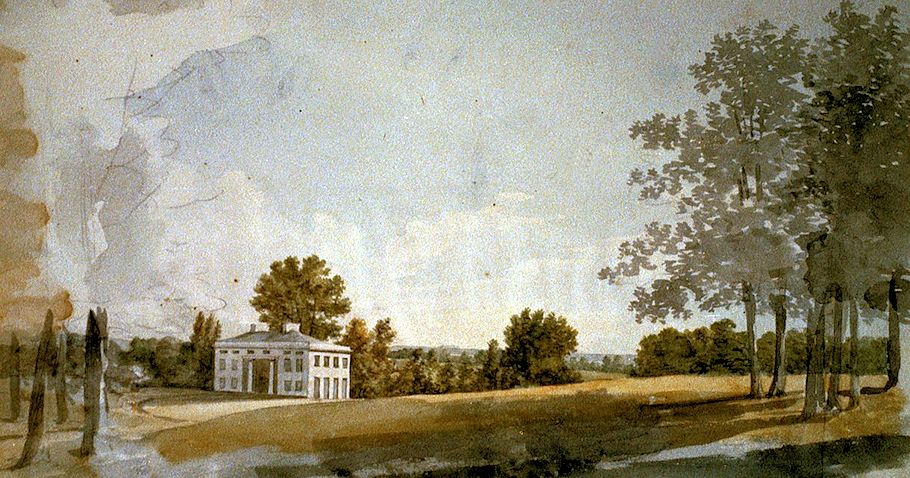
October 1953
Tafuri begins his studies at the University of Rome "La Sapienza".
1956
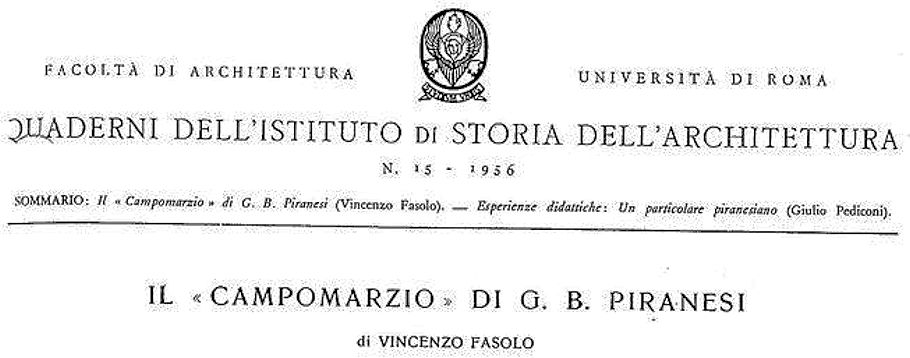
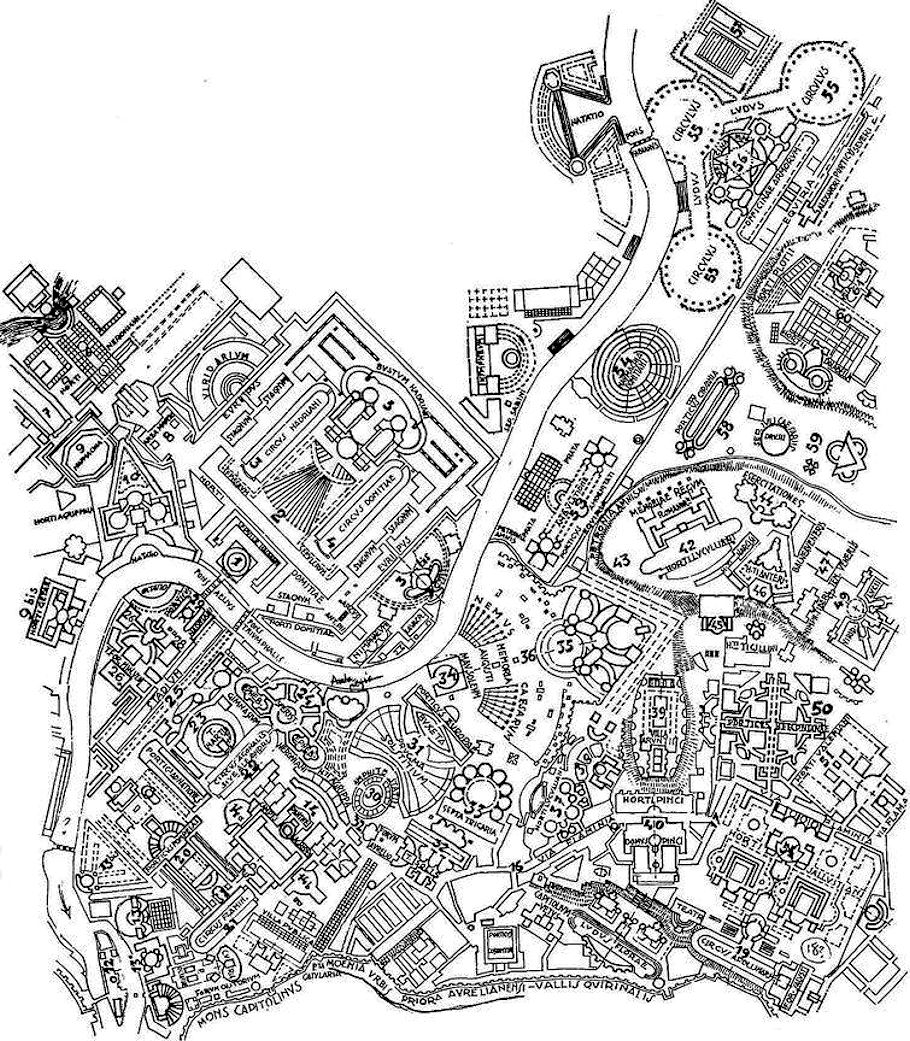
1980
"And even when we have established a casuistic complex of organisms based on triadic, polycentric, multilineal laws, or on virtuoso curvilinear layouts, we end up with a kind of typological negation, an "architectural banquet of nausea," a semantic void created by an excess of visual noise."
Manfredo Tafuri, The Sphere and the Labyrinth - Avant-Gardes and Architecture from Piranesi to the 1970s (Cambridge: The MIT Press, 1987), p. 35.
2023
Contrary to Tafuri's claim, the Ichnographia Campus Martius cannot be justifiably described as an "architectural banquet of nausea," yet, and interestingly, it is very easy to imagine Tafuri thinking--"What a banquet of nausea!"--whenever he was reading Fasolo's "The Campo Marzio of G. B. Piranesi."
And Tafuri would indeed be right, for Fasolo's essay is often a tough mess to work through. Unfortunately, however, it is also very easy, especially for me, to imagine Tafuri never having carefully studied the Ichnographia Campus Martius himself, because the majority of Tafuri's discrediting of the Campo Marzio applies more aptly to Fasolo's assessment and presentation of Piranesi's Campo Marzio rather than to the Ichnographia itself.
|